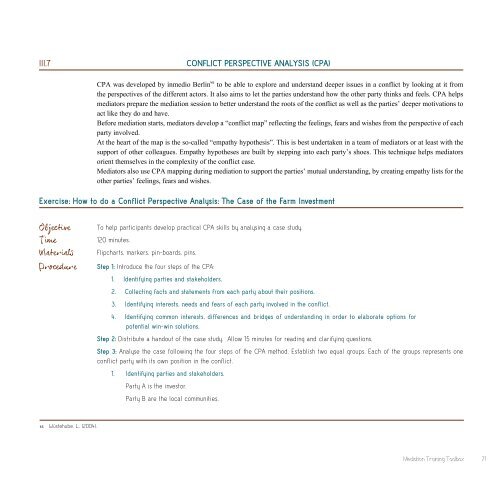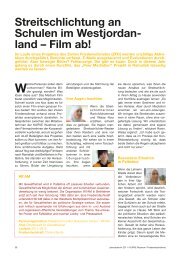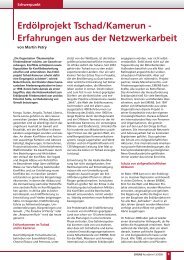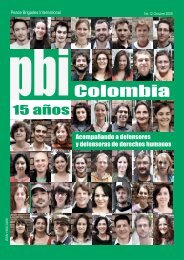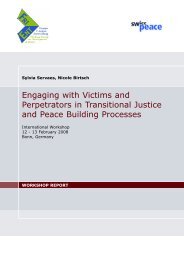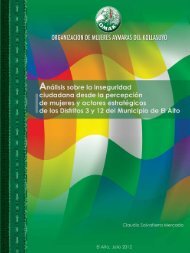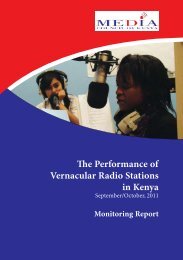Merging Ethiopian Wise-Counsel Mediation and Facilitative ...
Merging Ethiopian Wise-Counsel Mediation and Facilitative ...
Merging Ethiopian Wise-Counsel Mediation and Facilitative ...
- No tags were found...
Create successful ePaper yourself
Turn your PDF publications into a flip-book with our unique Google optimized e-Paper software.
III.7Conflict Perspective Analysis (CPA)CPA was developed by inmedio Berlin 46 to be able to explore <strong>and</strong> underst<strong>and</strong> deeper issues in a conflict by looking at it fromthe perspectives of the different actors. It also aims to let the parties underst<strong>and</strong> how the other party thinks <strong>and</strong> feels. CPA helpsmediators prepare the mediation session to better underst<strong>and</strong> the roots of the conflict as well as the parties’ deeper motivations toact like they do <strong>and</strong> have.Before mediation starts, mediators develop a “conflict map” reflecting the feelings, fears <strong>and</strong> wishes from the perspective of eachparty involved.At the heart of the map is the so-called “empathy hypothesis”. This is best undertaken in a team of mediators or at least with thesupport of other colleagues. Empathy hypotheses are built by stepping into each party’s shoes. This technique helps mediatorsorient themselves in the complexity of the conflict case.Mediators also use CPA mapping during mediation to support the parties’ mutual underst<strong>and</strong>ing, by creating empathy lists for theother parties’ feelings, fears <strong>and</strong> wishes.Exercise: How to do a Conflict Perspective Analysis: The Case of the Farm InvestmentTo help participants develop practical CPA skills by analysing a case study.120 minutes.Flipcharts, markers, pin-boards, pins.Step 1: Introduce the four steps of the CPA:1. Identifying parties <strong>and</strong> stakeholders.2. Collecting facts <strong>and</strong> statements from each party about their positions.3. Identifying interests, needs <strong>and</strong> fears of each party involved in the conflict.4. Identifying common interests, differences <strong>and</strong> bridges of underst<strong>and</strong>ing in order to elaborate options forpotential win-win solutions.Step 2: Distribute a h<strong>and</strong>out of the case study. Allow 15 minutes for reading <strong>and</strong> clarifying questions.Step 3: Analyse the case following the four steps of the CPA method. Establish two equal groups. Each of the groups represents oneconflict party with its own position in the conflict.1. Identifying parties <strong>and</strong> stakeholders.Party A is the investor.Party B are the local communities.46 Wüstehube, L.. (2004).<strong>Mediation</strong> Training Toolbox71


